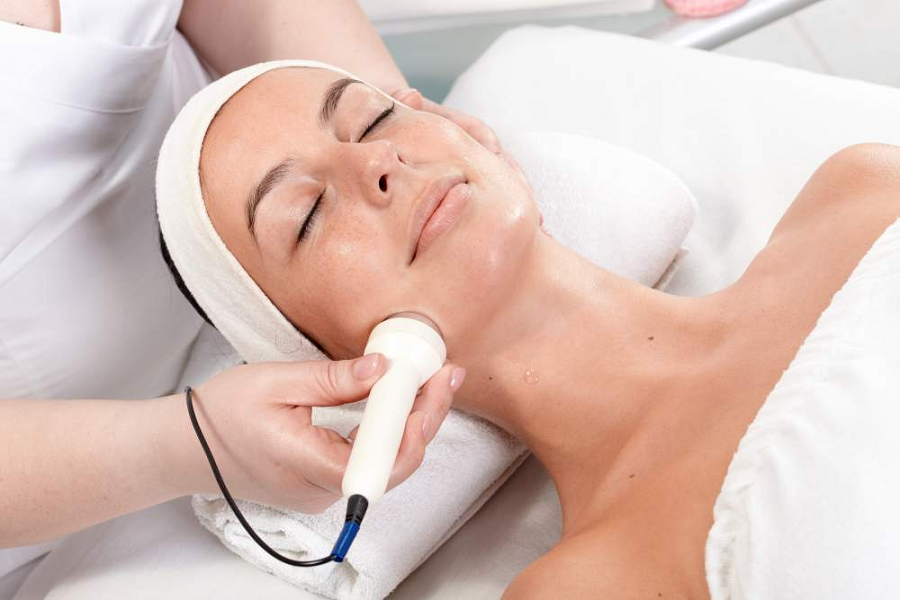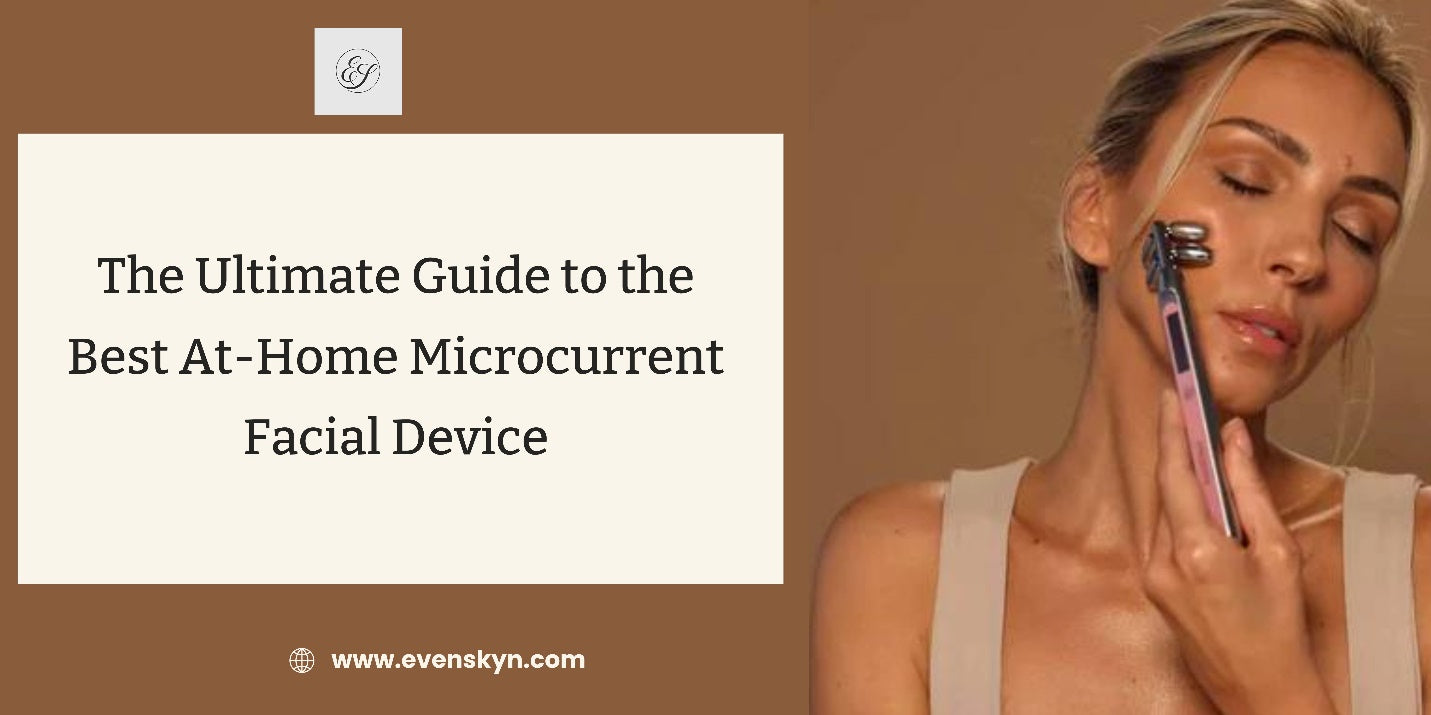Medically Reviewed by Dr. Lisa Hartford, MD
Human skin has several biomechanical features for protection from outside factors. The viscoelastic nature of the skin, allows it to conform to the body's contours. This is possible due to collagen and elastin in the dermis.
All these natural processes may decline with aging and other factors. You may be able to delay aging signs by encouraging skin rejuvenation with non-invasive skin therapies. These therapies may include radiofrequency, microcurrent ultrasound, and LED.
Talking about microcurrent therapy, it has become really popular. Essentially, it's a workout for your facial muscles! It may be able to remove puffiness and diminish wrinkles and fine lines by reaching the skin's cellular levels.
Learning how it works on the skin, it may be used effectively for non-invasive facial rejuvenation. Microcurrent works in conjunction with the skin biomechanics. Since our skin is viscoelastic, it can benefit from the spiked collagen production after microcurrent therapy.
Keep reading as we discuss in detail how microcurrent impacts skin biomechanics and viscoelasticity measurements.
Understanding the Viscoelasticity of Human Skin
The human skin has fascinating biomechanical properties that offer protective functions. Both elasticity and viscoelasticity allow the skin to adhere and move along with the body. The viscoelasticity of the skin may depend on the thickness of the epidermis and dermis with elastin and collagen content in the extracellular matrix.

In simple words, viscoelasticity is the essential function of the dermis to protect the body from external force. Moreover, the elasticity in the skin allows the skin to move as needed along with the body organs and muscles.
The viscoelasticity of human skin, muscle and adipose tissues can be studied with a medical imaging technique called elastography. It plays a role in detecting tissue diseases and their severity. The non-invasive method offers insight into what goes inside the skin and muscles.
Skin Biomechanics and Viscoelasticity Measurements
Several scientists have conducted studies in the areas of biomechanics and viscoelastic properties to understand how various conditions impact elasticity. As a result of these studies, we can understand various dermis components and which techniques may improve the current state.
81 subjects were studied over a period of 3 years in a recent study. The participants were divided into healthy individuals and those with contact dermatitis. A Cutometer was used to determine the viscoelasticity of the skin. The treatment given to the group with contact dermatitis worked, as there was improved elasticity in the skin.
According to the viscoelastic nature of the skin, it must return to its previous state after deformation. Hence, there was an 11.7% increase in the skin biomechanical elasticity after 28 days of treatment. On the other hand, the healthy group participants reached a 6.6% stable moisturization after the treatment.
How Does Microcurrent Impact the Skin?
Microcurrent uses very low voltage electrical current pulses across the skin. It works at a cellular level and may help in reducing saggy skin, wrinkles and fine lines. Microcurrent is known to have a rejuvenating ability to revive and nourish muscles, skin, lymph and blood.
The microcurrent may also be linked to stimulating endorphins, making you look and feel better at the same time. Another significant impact of microcurrent is wound healing. The current mimics the current that is present in the skin after an injury occurs.
These molecular activities encourage healing by cell proliferation and migration at the wound sites. As per recent studies, microcurrent can release the transforming growth factor-beta-1 (TGF-β1) in fibroblasts and osteoblasts.

These fibroblasts are responsible for collagen and elastin production in the skin. Hence, rejuvenation at the cellular level is possible with microcurrent treatments. Moreover, microcurrent also helps activate genes implicated in Hedgehog, TGF-β1 and MAPK signaling pathways.
This study proves how microcurrent impacts skin rejuvenation by quicker wound healing. It uses signal transductions via MAPK phosphorylation. Microcurrent therapy can also help aging skin by triggering specific genes involved in the healing process.
In another study, thirty participants up to 45 years of age participated. They all had significantly visible wrinkles with no other signs of skin problems. This study was done to understand the impact of microcurrents on wrinkles. Pictures of wrinkles were taken before starting the experiment.
The participants were given microcurrents for twenty minutes for 30 sessions. Their photos were taken after the treatment was over and compared in three different blinded reviews. About 70% of participants were satisfied with the results after one month of stopping the treatment.
The blinded reviews reported a 21.18% improvement in forehead wrinkles and a 7.61% improvement in nose and mouth region. There was an improvement in the overall skin texture and appearance. Also, none of the participants reported any side effects.
Benefits of Microcurrent for Aging Skin
Here are some ways your skin will benefit from consistent microcurrent therapy.
- Microcurrent may help in facial muscle toning. As a result, the skin will appear firmer and tighter. Therefore, it may be an excellent solution for sagging skin.
- Microtherapy reduces the appearance of fine lines by producing collagen fibers in the skin. It increases the ATP production in the skin, stimulating collagen and elastin that may have diminished due to aging.
- Aging makes the facial muscles weaker and saggy. Microcurrent may be like a workout for these muscles. With microcurrent therapy, the facial muscles will retrain themselves and get redirected towards the contours of the face.
- Your skin will have more blood circulation as the current reaches deep inside the muscles. Moreover, it will add more nutrition and oxygen to the skin via blood vessels.
How to Use Microcurrent Therapy At Home?
So many benefits of microcurrent therapy are exciting. Fortunately, with at-home microcurrent devices, you do not have to book clinical treatments and step out. We recommend the EvenSkyn Phoenix Face Lifting Microcurrent Bar for getting professional microcurrent therapy benefits at home.

It comes in a durable metallic alloy body with an ergonomic grip, allowing you to glide it across the face effortlessly. The bar has four massaging alloy rollers designed at a 115-degree angle for maximum skin contact and microcurrent delivery. The best thing is that it requires no batteries. You may charge it with artificial or solar light.
The roller offers a deep-kneading massage that improves blood circulation in the skin. Besides, the 15-microampere current will deliver tiny pulses to the dermis and epidermis. With consistent use, you may notice firmness and improvement in skin texture. You can use the roller for 15-20 minutes per area. This may include forehead, cheeks, mouth, jawline and neck. The whole face can be treated in 45-60 minutes.
Conclusion
Now you know how microcurrent works at the cellular level and triggers skin repair. The viscoelastic properties of the dermis depend on elasticity. Since microcurrent leads to collagen and elastin generation, the viscoelastic behavior of the skin starts to revive. As a result, your skin may appear tight and rejuvenated. Consistent use of microcurrent therapy may diminish existing fine lines and prevent new wrinkles from forming.
References:
- Constantin, M., Bucur, S., Serban, E., Olteanu, R., Bratu, O. G., Constantin, T. "Measurement of skin viscoelasticity: A non‑invasive approach in allergic contact dermatitis". Experimental and Therapeutic Medicine. October 2020
- Konstantinou E, Zagoriti Z, Pyriochou A, Poulas K. “Microcurrent Stimulation Triggers MAPK Signaling and TGF-β1 Release in Fibroblast and Osteoblast-Like Cell Lines. Cells." August 2020
- Fatemeh Saniee, Khosro Khademi, Parviz Yazdanpanah. "The effect of microcurrents on facial wrinkles." September 2012
- Shilpa Jain. "Effect of microcurrent facial muscle toning on fine wrinkles & firmness of face." March 2012
- Holzer AM, Granstein RD. "Role of extracellular adenosine triphosphate in human skin. J Cutan Med Surg." 2004 Mar-Apr
- Mary K. Dick; Julia H. Miao; Faten Limaiem. "Histology, Fibroblast" May 2023









Leave a comment
All comments are moderated before being published.
This site is protected by hCaptcha and the hCaptcha Privacy Policy and Terms of Service apply.